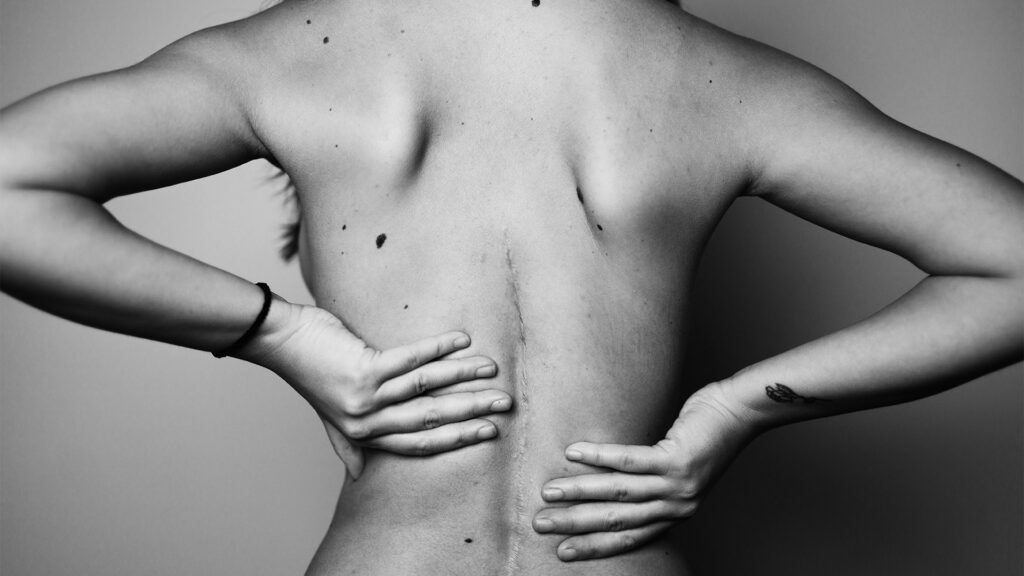Bad posture cannot cause scoliosis. However, practicing and maintaining optimal posture can help reduce pain and slow the condition’s progression.
Scoliosis refers to when a person has a sideways C- or S-shaped curve in their spine. It can occur at any age but most often presents during a person’s teens.
Depending on the severity of the curvature, a doctor may recommend surgical or nonsurgical treatments. Conservative treatment for scoliosis often involves exercises and stretches that support the spine and encourage adequate posture.

No research supports that inappropriate posture can result in scoliosis. However, not maintaining adequate posture can cause other health issues, such as neck and back pain.
In most cases, health experts are unsure of the exact cause of scoliosis. Possible factors that may result in the condition
- genetics
- hormones
- changes in cell structure
- development issues of the spine that occur when the baby is in the womb
- spinal injury
- neuromuscular disease
- tumors
Yes, good posture can help with scoliosis. Maintaining optimal posture can help reduce pain and tension and slow the progression of the condition.
Posture refers to how the spine curves and how the muscles engage while a person is standing or sitting. It involves the spine and muscles working together to help ensure a person is correctly aligned. This helps lengthen the spine and strengthen the back, neck, and shoulder muscles, which can help support spine health and reduce the risk of injury.
In many cases, a person can correct and improve their posture by making certain lifestyle choices and strengthening their muscles. Tips can include:
When standing
Tips to help posture while standing include:
- standing up straight and tall
- keeping shoulders back
- pulling the stomach in
- putting most weight on the balls of the feet
- keeping the head level
- letting arms hang down naturally at the sides
- keeping feet roughly shoulder-width apart
When sitting
Tips to help posture when sitting include:
- sitting with the shoulders back
- not leaning forward
- relaxing the shoulders, with elbows by the side
- having knees below or level with the hips
- ensuring computer monitors are at eye level or below when using them
Read on to learn more about how to improve posture.
Treatment options for scoliosis
More severe scoliosis may require surgery, such as spinal fusion surgery, which involves metal rods and a bone graft to help straighten and realign the spine. In other cases, nonsurgical treatments may be sufficient and can include bracing and scoliosis-specific exercises.
While more research is still necessary, a 2022 literature review notes that scoliosis-specific exercises can be an effective option for managing scoliosis. Exercises can include:
- pelvic tilts
- cat camel stretch
- double-leg abdominal press
- single leg balance
- plank exercise
A 2023 systematic review also recommends the Schroth method for managing scoliosis. This refers to a custom physiotherapy program that uses exercises and breathing techniques to help straighten and stabilize the spine.
Read on to learn more about stretches and exercises for scoliosis.
An inadequate posture cannot cause scoliosis. Researchers are unsure of the exact cause of the condition, but it likely relates to certain factors such as genetics, hormones, and spinal injury.
While issues with posture do not cause scoliosis, maintaining optimal posture can help manage scoliosis. A person can practice proper posture and use scoliosis-specific exercises to help lengthen the spine and strengthen the back.


